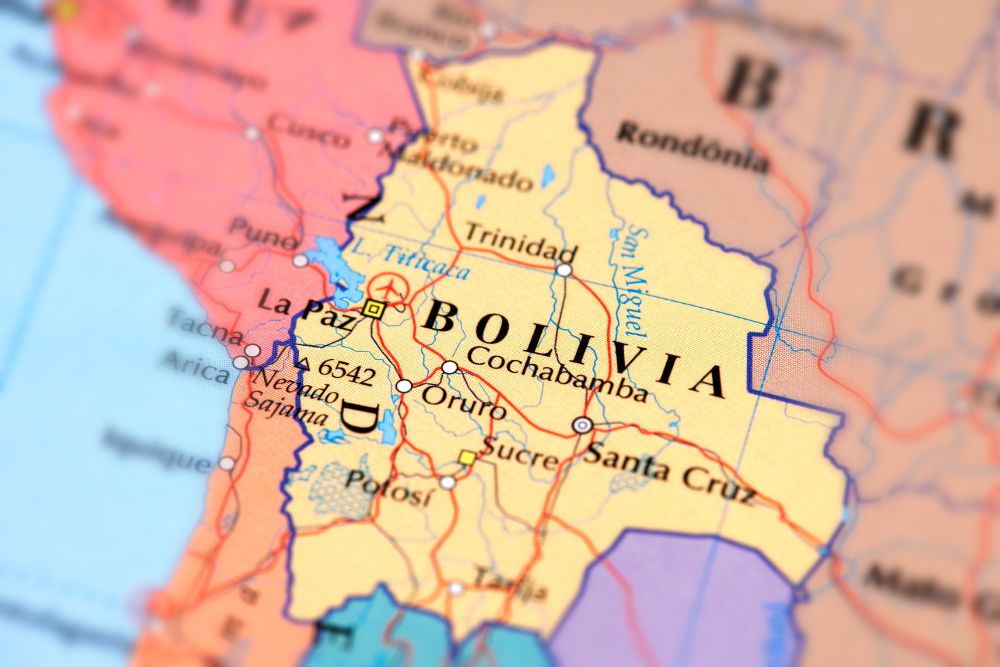Bolivia is the place to go for exotic wildlife, eclectic food, and mind-blowing vistas.
With a rich history and vibrant culture, these Bolivia facts are sure to tempt you into booking your next vacation!
1. Bolivia is Home to 37 Languages
If you don’t know Spanish (the official language), chances are you will find someone who can communicate in your native tongue! Bolivia has 37 registered languages that are spoken within its borders, and all indigenous languages are recognized.
Some of the most popular languages aside from Spanish are the Andean Quechua, Chiquitano from Santa Cruz, Guaraní which is primarily spoken along the border to Paraguay, and Aymara which is spoken in the Altiplano.
2. A Tale of Two Capital Cities
Bolivia has two capitals – La Paz which is the administrative capital that is well-known in the world, and Sucre which is the location of Bolivia’s seat of government and is recognized in the Constitution of Bolivia as the nation’s official capital.
If you’re traveling and asking how to reach the capital of Bolivia, you should probably specify which of the two cities you want to visit as they are located on opposite ends of the country!
3. Bolivia has the Largest Salt Flat in the World
Do you want to add a little flavor to your next meal? Pick up a bag of salt from one of the tourist stands near Salar de Uyuni – the world’s largest salt flat!
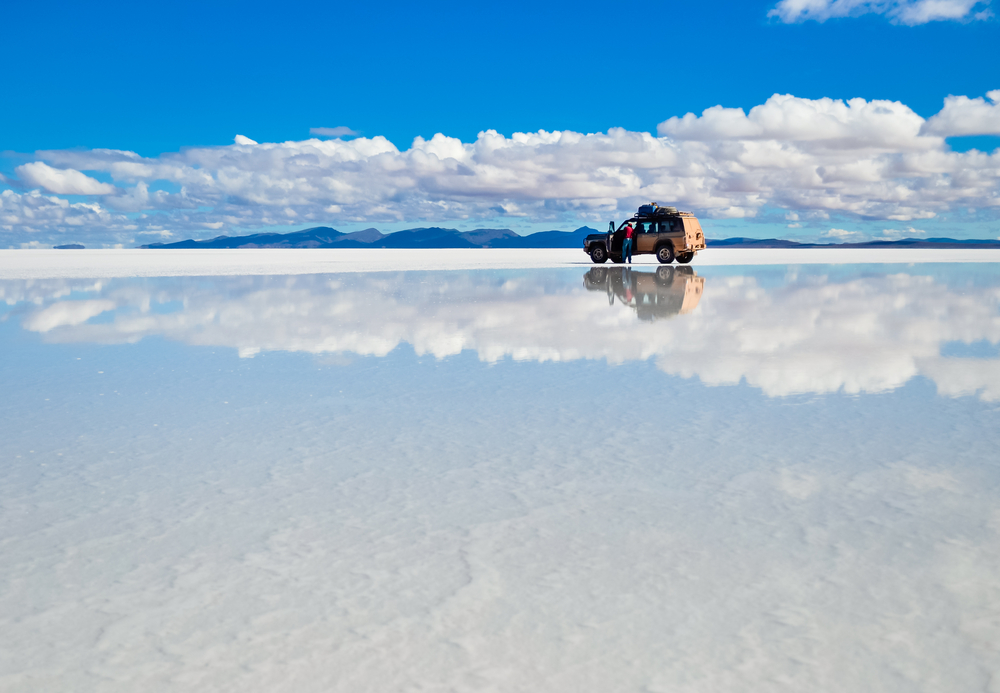
As large as the big island of Hawaii, Salar de Uyuni covers an area that is 10,582 square kilometers. The best time to visit is during the wet season when the surface is covered with water as it forms a giant mirror which makes for some epic photography!
4. You Can Stay at a Palace of Salt
Located near Salar de Uyuni, the Palace of Salt is the ultimate destination if you want to surround yourself with sculptures, light fixtures, walls, ceilings, and even furniture all crafted from salt. This luxury hotel has a spa, fitness center, and 42 rooms to choose from starting at $190 per night.
The view of the stars from the Palace of Salt is said to be unbeatable as there is little light pollution, so it is a popular destination for night photography.
5. Bolivia Obtained its Name from a Venezuelan
Bolivia was once known as Charcas when it was considered a territory of Spain.
Simón Bolívar is the man who led the Wars of Independence against Spain throughout South America and successfully liberated 5 countries from Spanish rule.
The five countries were Venezuela, Peru, Ecuador, Colombia, and Bolivia, which was named after Bolívar. This is also why tourists may see a lot of Venezuelan influences throughout modern-day Bolivia.
6. Bolivia Lost Access to the Sea because of Carnival
Today, Bolivia is considered a landlocked country – one of the only two in South America. They blame Chile for invading a portion of their land during a celebration known as Carnival when Bolivians were celebrating and too drunk to do anything about it.
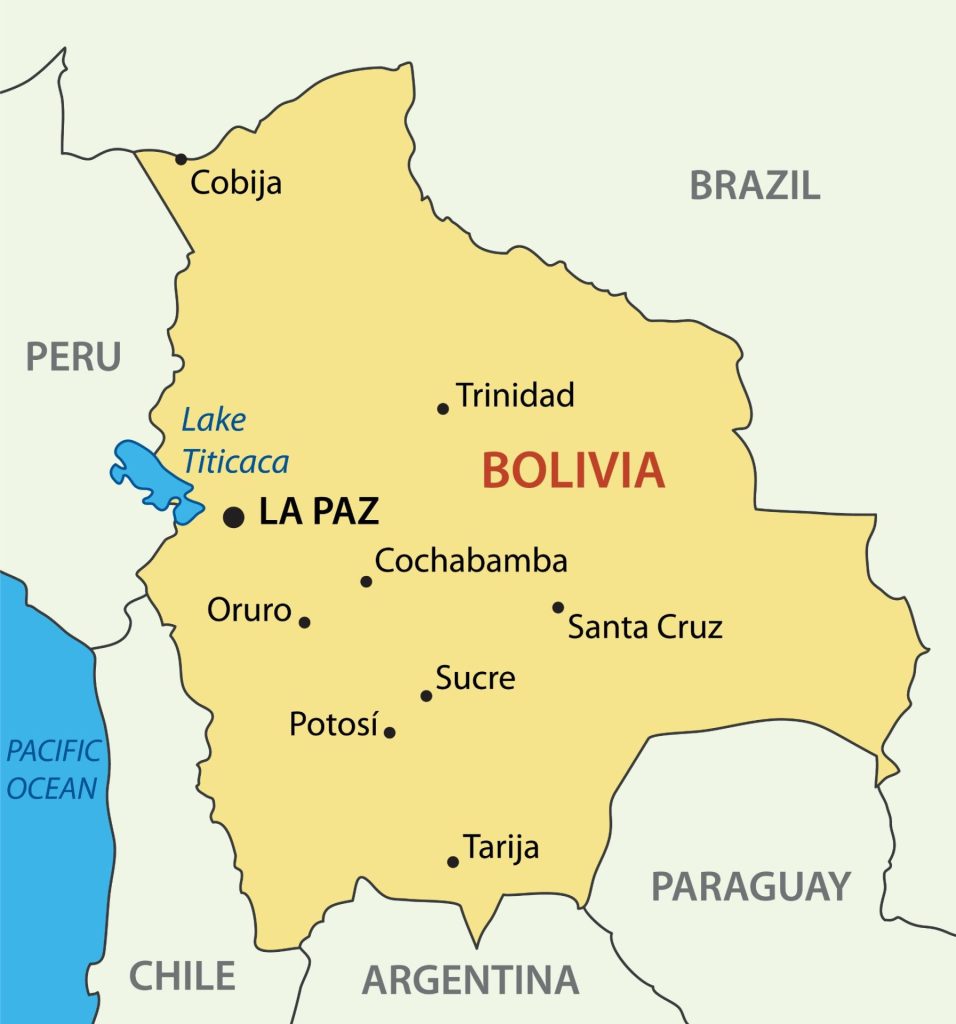
The portion of the land that connected Bolivia to the ocean has been lost to Chile and is still hotly contested by Bolivia which continues to have a Navy and vows to get access to the sea back from Chile.
There is no love lost between these two countries – it may be best to not bring this topic up in conversation with Bolivians!
7. It’s Easy to Get “High” in Bolivia
Much of Bolivia is considered high-altitude. La Paz which sits on the Andes’ Altiplano plateau has over a million inhabitants who can claim they live in the highest city in the world.
Several Bolivian cities sit at 3,500 meters above sea level including Santa Barbara, El Alto, Potosí, Huanuni, Uyuni, and Colquechaca. These cities offer stunning vistas and make excellent backdrops for panoramic photos!
8. Cholita Wrestling is a Must See in Bolivia
Bolivia is the only place in the world where indigenous women wrestle men and always triumph! Women have been wrestling men since the early 2000s in front of spectators.
While it is thrilling to watch these ladies emerge victorious in their traditional multi-layered skirts, it is equally important to remember that this exhibition is intended to make a statement about the domestic violence problem in Bolivia, and a woman’s ability to fight back.
Don’t miss out on an opportunity to witness this firsthand and support these women!
9. Carnaval de Oruro is Epic
If you want to visit Bolivia during Carnaval, Oruro is the city you want to be in! Native folk dance and multicultural music will await you along with traditional celebratory food and drink.
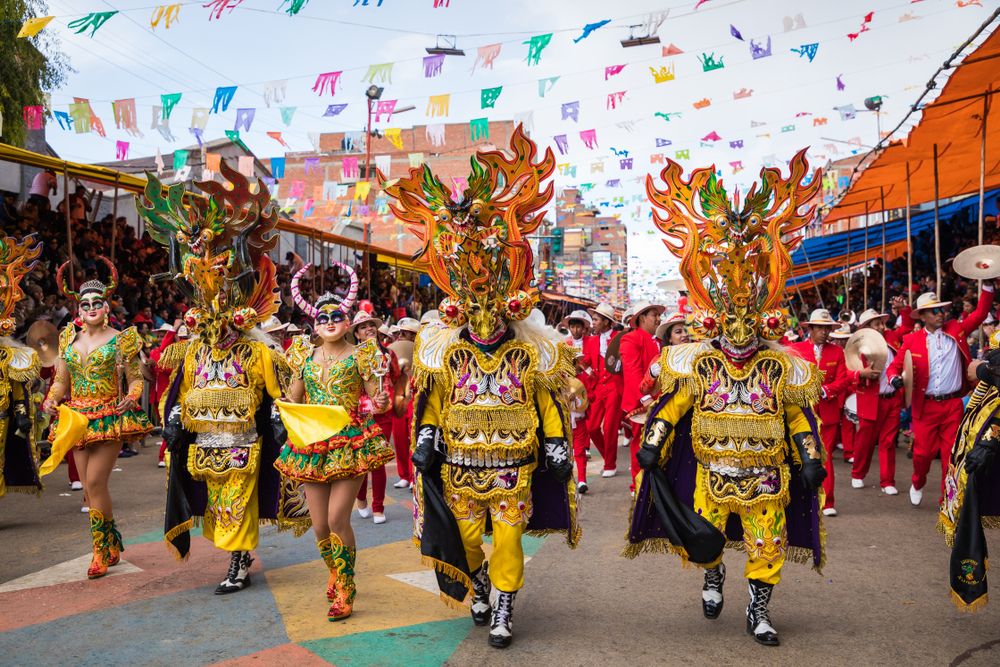
Oruro itself has been known as a silver mining town since the 16th century. It has a rich history pre-dating the Incas and the indigenous people consider Oruro a sacred place of pilgrimage.
Oruro’s Carnival is considered one of UNESCO’s Masterpieces of the Oral and Intangible Heritage of Humanity. According to the UNESCO site, “Every year, for six days, this carnival gives rise to the display of a whole range of folk arts in the form of masks, weavings and embroidery. More than 28,000 dancers and 10,000 musicians take part in the parade.”
10. A Prison Run by Prisoners is a Bolivian Tourist Attraction
A truly unique and bizarre tourist “attraction” is San Pedro prison located in La Paz. This prison has no guards on the inside and operates like a mini city run by the prisoners themselves.
Many prisoners invite their families to live with them inside, and the cells are “rented” by prisoners. It is said that the world’s largest cocaine operation is run from within the prison and the purest cocaine in the world comes from there.
Guards only watch the outer walls to ensure prisoners don’t leave before their sentence is up.
Backpacking tours used to be allowed but were banned when a female backpacker was assaulted. Now, official tours stop in front of the prison so curious tourists can snap a few photos.
11. Guinea Pigs Are Eaten in Bolivia
This one is for the adventurous eaters out there!
The people of Bolivia eat Guinea Pigs (Cuy) along with neighboring countries Peru and Ecuador. Cuy is a popular food in parts of Latin America, and Guinea Pigs were domesticated as a food source.
Cuy contains little fat and is high in protein. It is usually served whole and is roasted.
12. Bolivia is Home to the Andes Mountains
Considered one of the most impressive and beautiful mountain ranges in the world, there are a plethora of hiking and walking trails for backpackers and adventure seekers!
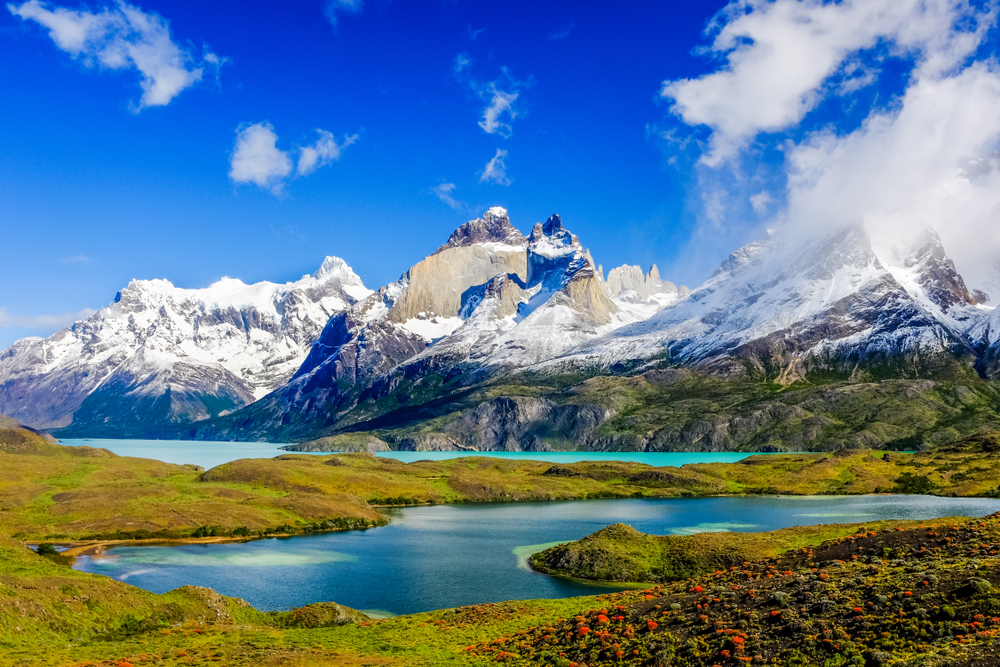
You can choose from guided tours led by locals or go it alone armed with nothing but a map and supplies.
Some of the best trails are:
- The Bolivian Inca Trail
- Illampu Circuit
- El Cholo Track
13. The Largest Lake in South America is in Bolivia
The highest navigable lake in the world lies in Bolivia in South America.
Lake Titicaca is a freshwater lake sitting at an altitude of 3,812 meters. The lake is situated between Peru and Bolivia and is considered a sacred site by Bolivians.
Visitors can stop at Copacabana, the town next to the lake for traditional cocktails (do not miss the Bolivian Chufly cocktail)! There are also architectural sites and ruins that backpackers can visit adjacent to the town.
14. Most Dangerous Road in the World
Called the “Death Road” by locals, the Yungas Road in Bolivia attracts 25 thousand visitors each year who wish to cycle this road between La Paz and Coroico.
Over 300 people are said to lose their lives annually on this road, making it the most dangerous road in the world to traverse. The mountainous terrain coupled with bad visibility and poor infrastructure with a lack of maintenance makes this road perilous.
For those wishing to cycle safely, a newer road has been constructed between Coroico and La Paz nearby.
15. You Can Visit a Real Witch Market
Are you running short of potion ingredients or need to pick up a few items for your altar in the woods?
Bolivia has El Mercado de las Brujas, which is known as a witch market where one can find all sorts of fantastic offerings. Indigenous people still practice rituals and many of the items they need for these rituals can be found at the market.
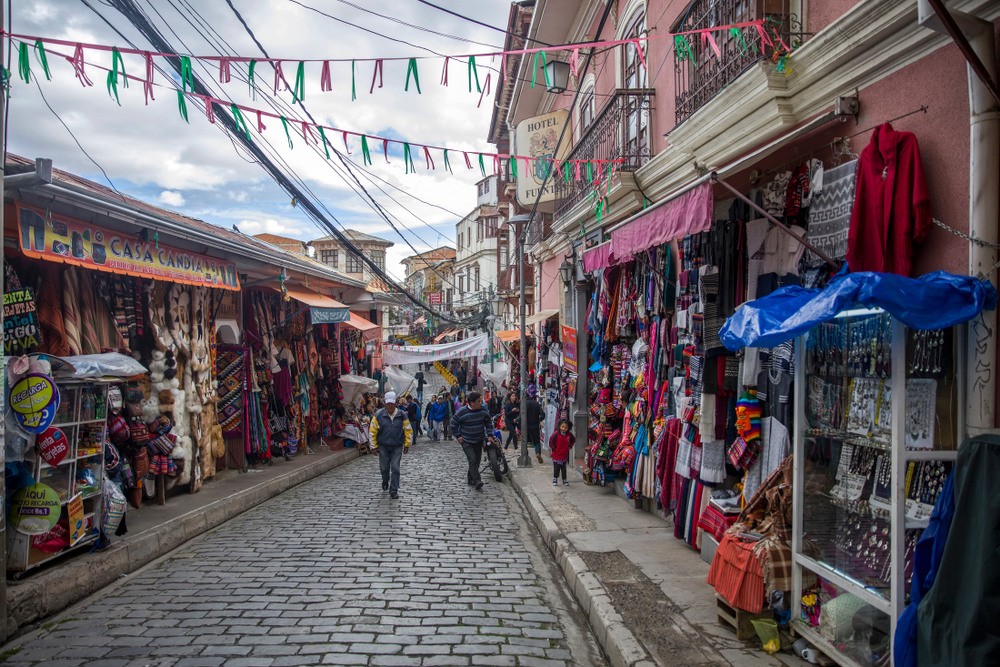
Stone carvings, dried frogs, and llama fetuses are just a few things that you can find here. Interestingly, llama fetuses are often buried beneath the foundation of new buildings as an offering to protect the workers from accidents during construction.
16. Bolivia Has Three Species of Flamingos
There are only 6 flamingo species in the world and three of them can be found in Bolivia!
The Chilean Flamingo, Andean Flamingo, and James’ Flamingo have made the Eduardo Avaroa Andean Fauna National Reserve home.
You may also spot them at Laguna Colorada lake where they come to eat and drink.
17. Voting Age Varies by Marital Status
Shocking, but true! If you are married, you can vote when you are 18. However, if you’re a lonely single, you have to wait until you’re 21!
Either way, voting is not optional – you are forced to cast your ballot.
18. Pink Dolphins are Native to Bolivia
Rare pink dolphins were first discovered in 1832 in the Amazon basin in Bolivia. They were called national treasures by President Evo Morales in 2012, who introduced protection laws as they are an endangered species threatened by overfishing and deforestation.
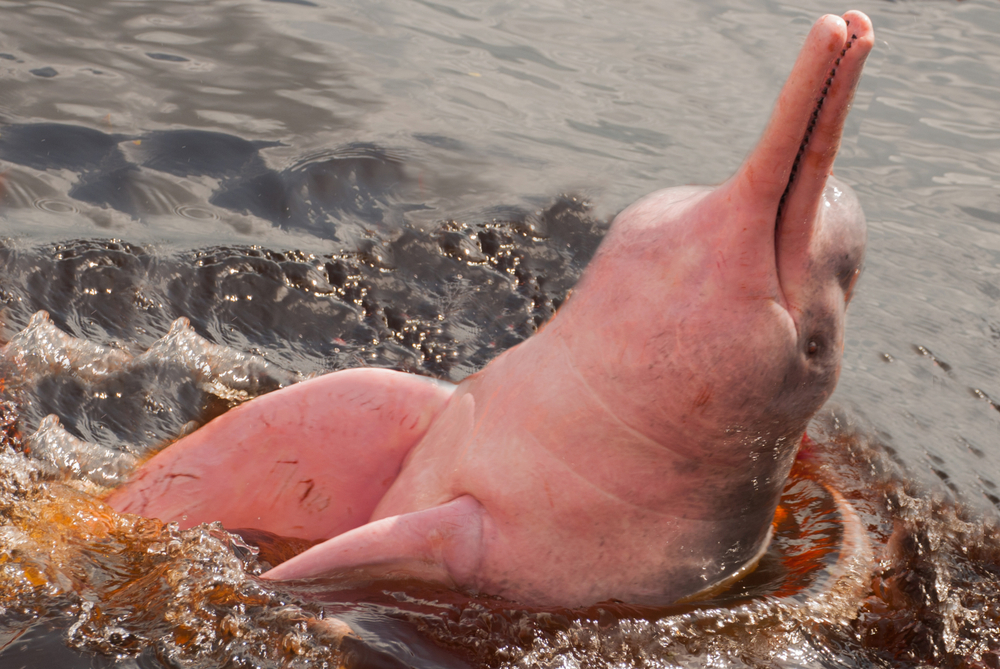
These lovely dolphins are pink and become a deeper shade of pink when they are excited. The best way to see them is by taking a river tour!
19. Bolivia is Home of the Backwards Clock
In an effort to get Bolivians to question established conventions and to prompt creative thinking, the clock on the congress building in La Paz underwent a dramatic makeover.
The numbers on the clock are set up to go counterclockwise! It has been called the ‘Clock of the South’ and is just one more unique landmark to visit in Bolivia!
20. Madidi National Park is Full of Rare Animals
One of the largest protected areas in the world is found in the upper Amazon basin. Madidi National Park is a huge nature reserve that is home to hundreds of mammal species and thousands of bird species.
It measures an impressive 18.958 square kilometers and is full of rare plants and animals. Be sure to take a walk in this natural wonderland – new species are still being discovered!
21. Ametrine is Only Found in Bolivia
Ametrine is also known as Bolivianite and is found solely in Bolivia. It is a type of purple-yellow quartz that naturally occurs only in highly specific circumstances.
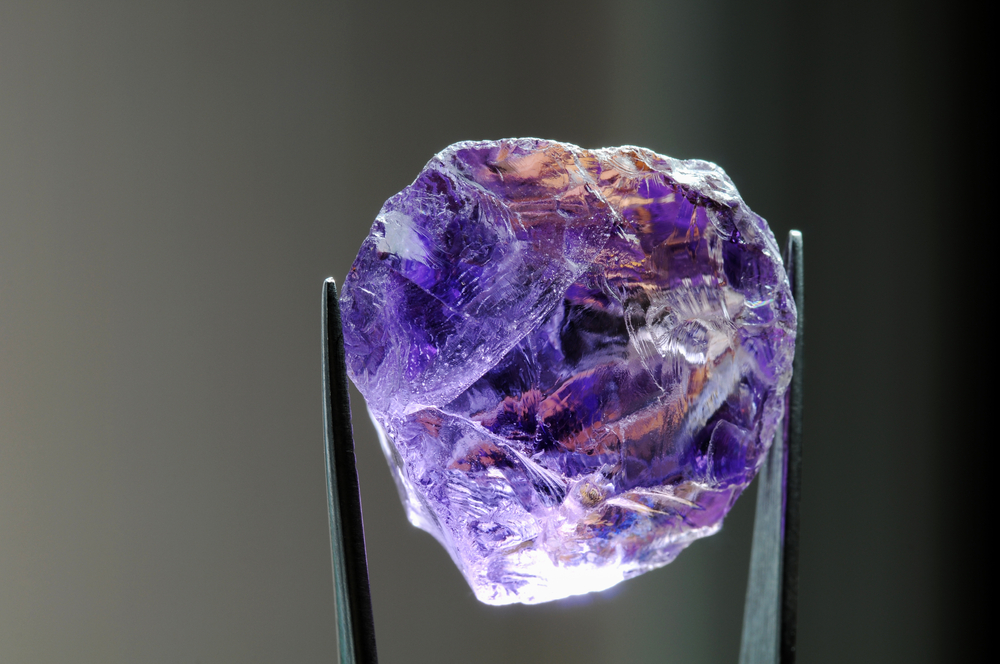
The only Ametrine mine in the world is the Anahí mine in Santa Cruz! These semi-precious gems are often made into jewelry and you can purchase them from jewelers in Bolivia.
22. Mount Sajama is Bolivia’s Highest Mountain
This incredible peak measures 6,542 meters or 21,463 feet! It is part of the Cordillera Occidental range and features stunning vistas for those who aren’t afraid of heights!
It takes 4 days to climb, and even beginners are able to do it so long as they are able to withstand high altitudes.
23. Zebra’s Help Children Cross the Road
Sadly, they are not actual zebras but people dressed in zebra costumes that teach children (and elderly adults) how to safely cross the busy roads in Bolivia.
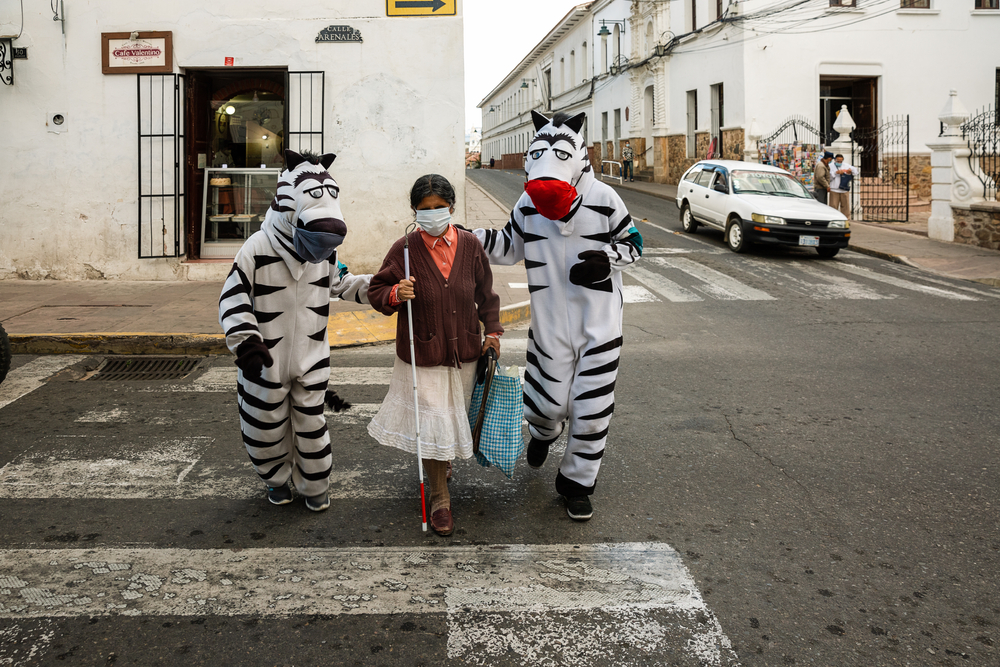
Don’t be alarmed if you see people in these costumes – they are providing an important public service!
24. Hats Are Symbolic in Parts of Bolivia
Wearing hats is traditional for many women in Bolivia. Single women wear hats made of wool and leather hats adorn married women in Quechua, Tarabuco.
Hats vary in style, size, and color, and are indicative of the social status of a citizen.
25. Bolivia Produces More Brazil Nuts Than Brazil
More than 70 percent of the supply of Brazil nuts worldwide comes from Bolivia!
They export 25 million tons annually to the United States, Europe, and ironically to Brazil which are the areas that consume the most Brazil nuts.
26. Bolivia Has a Massive Butterfly Sanctuary
The largest butterfly sanctuary in the world is located just minutes from Santa Cruz. If you’re a fan of butterflies, the Guembe Biocenter must be seen to be believed.
It covers over 24-hectares or 59 acres and is open 365 days a year! It is one of the most famous Bolivian landmarks and one of the most visited tourist locations in the country.

